If you walk into a professional kitchen, chances are you’re going to find a chef (or two, or three) measuring ingredients using a digital scale.
Well, there’s a reason for that!
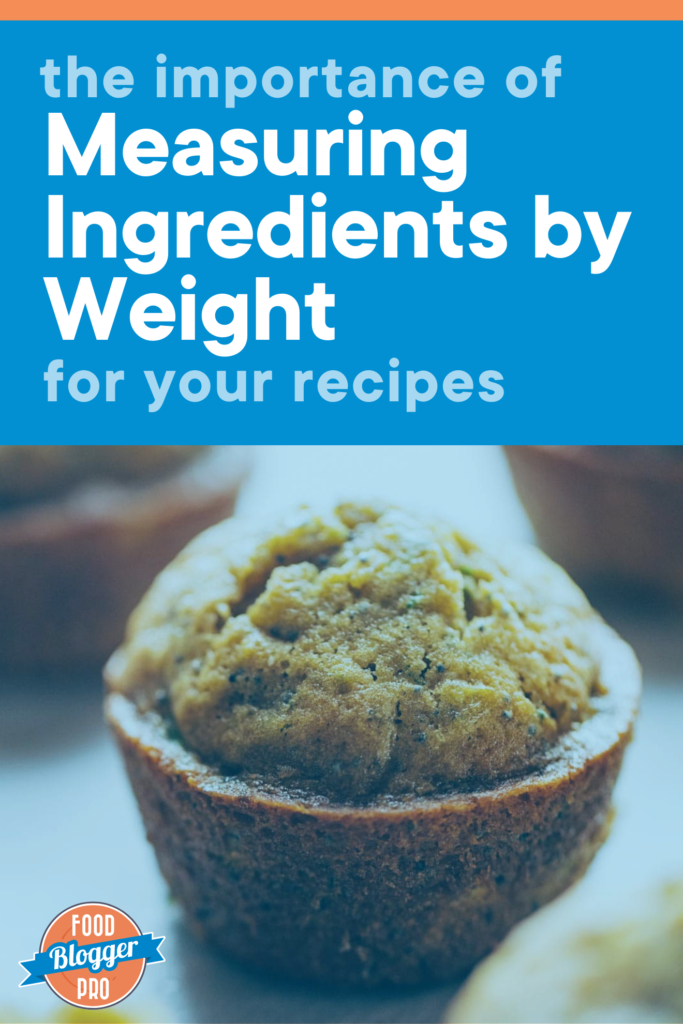
Weight vs. Volume Measurements
Before we get into it, let’s first break down the difference between weight and volume measurements.
Volume is a measurement of the amount of space that something takes up. We’re talking measurements like gallons of milk, teaspoons of cinnamon, and cups of brown sugar.
On the other hand, weight is a measurement of an object’s heaviness. Grams of cornstarch, pounds of potatoes, and kilograms of dark chocolate are examples of weight measurements.
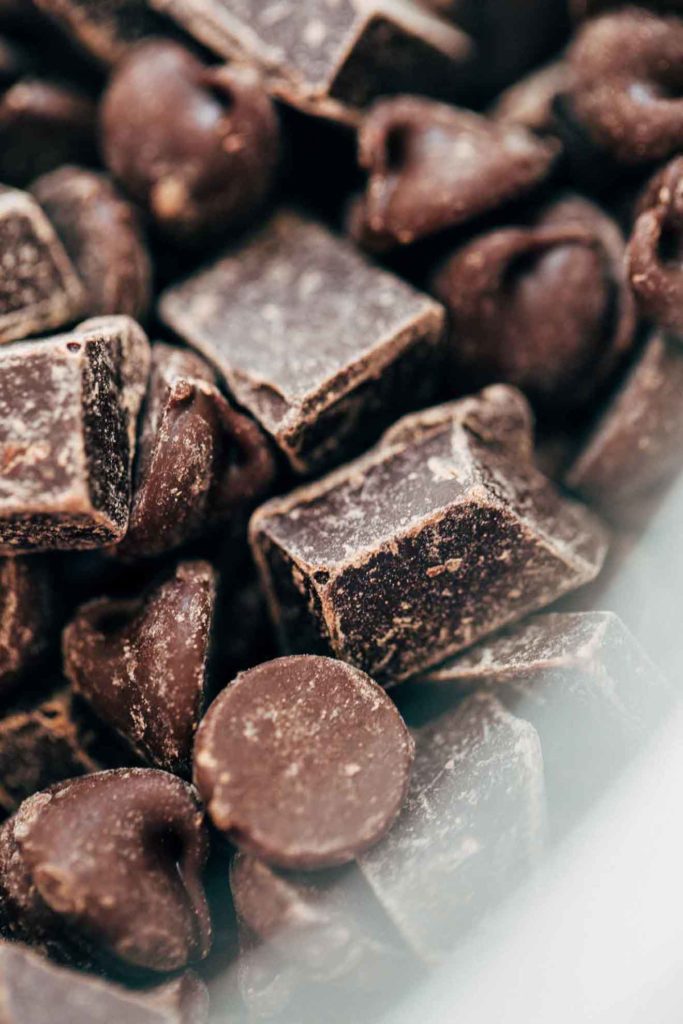
Why You Should Measure Ingredients by Weight
The most accurate way to measure ingredients is by weight because minor differences in measuring can lead to substantial differences in the final outcome of the recipe.
Here’s an example: Let’s say you’re making a homemade chocolate cake for your brother’s birthday, and the recipe you’re following calls for 2 and 1/2 cups of all-purpose flour.
When you pull out your bag of flour from the cabinet and use your measuring cup to portion it out, the actual amount of flour in that cup depends upon a number of factors:
- Was the flour spooned in?
- Was the measuring cup dipped into the flour?
- Did you level off the flour by packing it down?
- Did you scrape off the top of the measuring cup with a straight edge?
That’s a lot of variability, right? So if you pack the flour into the measuring cup too tightly, your chocolate cake might end up tough and chewy because you’re actually using more flour than the recipe called for.
And that’s where weight measurements come in.
Want to learn more about developing your own recipes?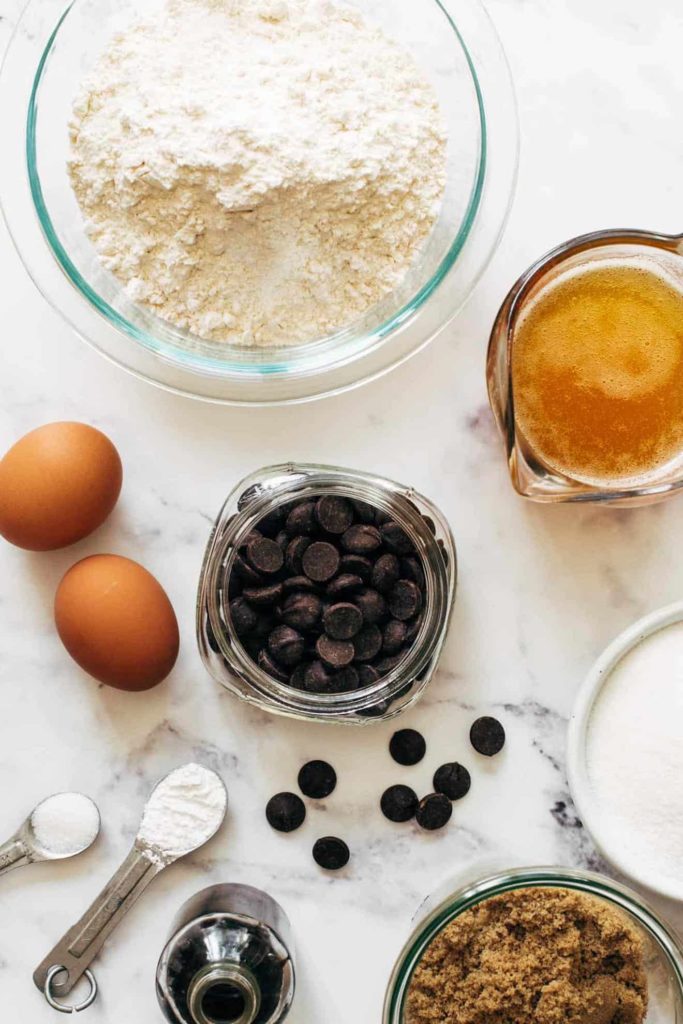
Benefits of Measuring Ingredients By Weight
In addition to being far more accurate, there are a lot of other benefits to measuring your ingredients by weight, such as:
1. It will save you time in the end.
The beautiful part about using a digital scale to weigh your ingredients is that you can make use of the tare feature.
Most digital kitchen scales come with a tare feature, and pressing the tare button will reset the displayed weight to zero (this is also sometimes called zeroing out!). The tare button is helpful for two reasons:
First, you can “zero out” the weight of whatever container you’re measuring your ingredients in so that the weight of the container isn’t included in your final weighted measurement. This ensures that you’re measuring only the weights of your ingredients.
Second, after weighing your first ingredient, you can press the tare button and reset the weight to zero. Then you can simply add in your second ingredient, tare the scale, add the third ingredient, and so on, helping you measure the weight of each individual ingredient.
Quick tip: If you place your container on the scale before you turn it on, the scale will automatically subtract the weight of your container without you having to press any buttons.
2. Weight measurements make it a lot easier to scale recipes.
If you want to double a recipe, what sounds easier: doubling 175 grams of sugar, or doubling 3/4 cup of sugar?
Weight measurements make it waaaay easier to scale recipes, and you’ll probably have less errors when doubling or tripling ingredient amounts. Save that brain space for something else!
3. You’ll have less dishes to wash later!
I don’t know about you, but anything that means fewer dishes is a winner in my book. 🙌🏻
If you use a digital scale to measure out ingredients for a recipe, you might have one or two bowls to wash in the end. That definitely beats washing every single measuring cup that you own!
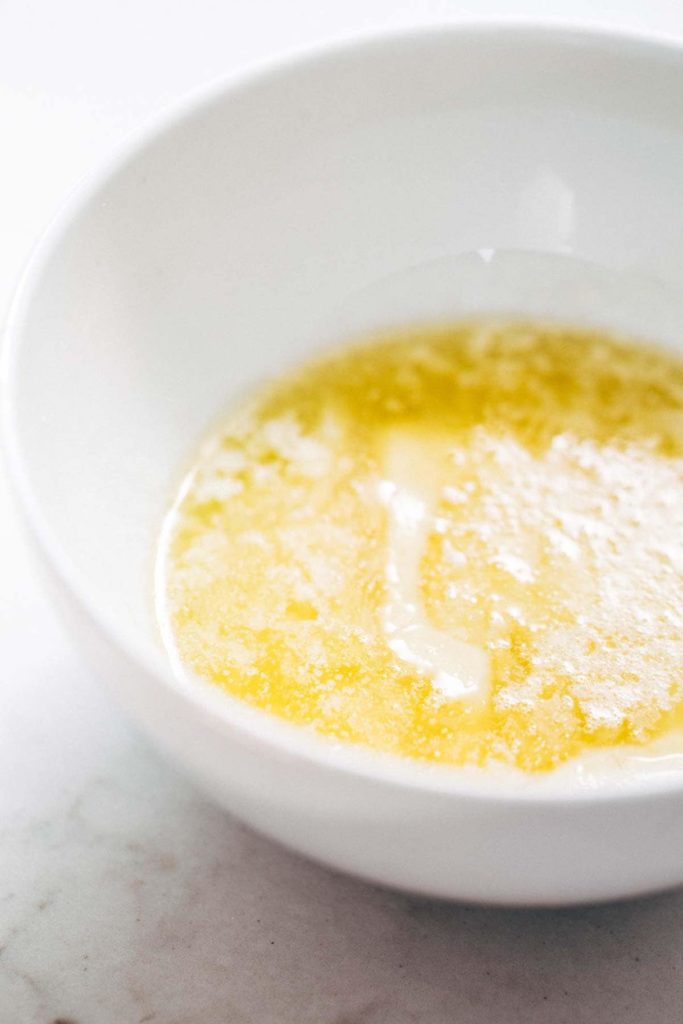
How to Convert a Recipe to Weight Measurements
With all that being said, how do you go about converting volume measurements to weight measurements? It’s actually pretty simple!
If you’re creating your own recipes, we actually recommend writing your ingredients with both weight and volume measurements.
Here in the United States, the vast majority of recipes have volume measurements. That said, the rest of the world oftentimes prefers using weight measurements! By including both in your recipes, you can make your recipes more accessible to anyone from around the world.
Luckily, there are a few different ways you can go about converting ingredients to weight measurements, including:
1. Weigh the ingredients out yourself.
Pull out that kitchen scale and weigh each ingredient individually, then record the amount in your recipe. This can take a bit more time, but it’s a good practice to follow when creating recipes from scratch.
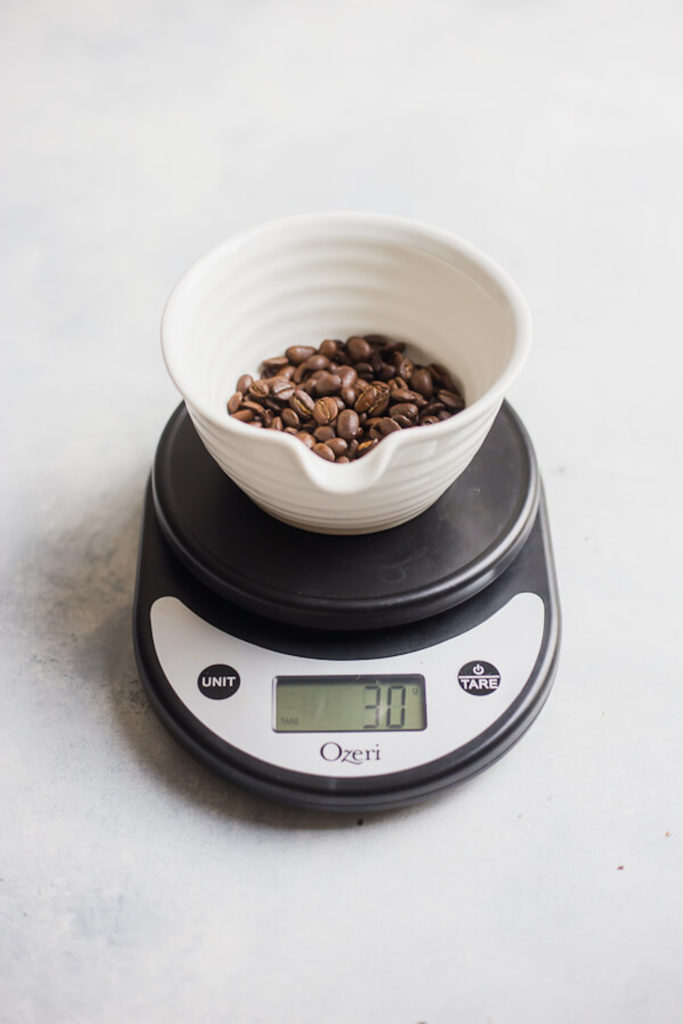
2. Use an online tool to convert the measurements.
If you search online, there are tons of online tools that can help you convert volume to weight measurements.
And if you’re using a recipe plugin on your site, it might be able to do this conversion for you!
3. Whip out that calculator and start converting yourself!
If you’re going to convert ingredients from volume to weight measurements, you’ll probably find yourself looking up individual ingredients frequently.
Here are a few conversions for some common kitchen staples:
- Granulated sugar: 1 cup = 7 ounces = 198 grams
- All-purpose flour: 1 cup = 4 1/4 ounces = 120 grams
- Baking powder: 1 teaspoon = 4 grams
- Baking soda: 1/2 teaspoon = 3 grams
- 1 large egg: 1 3/4 ounces = 50 grams
- Butter: 1/2 cup = 4 ounces = 113 grams
In case you’re looking for the weights of other ingredients not listed here, this Ingredient Weight Chart is a fantastic resource.
What about you?
How do you like to write the measurements in your recipes? Do you use weight or volume measurements (or both)?
I’d love to hear your thoughts!
I never understood why people use cups to measure. Maybe because that is not really common in Europe. Using weight is way more precise 🙂
It’s so interesting how different parts of the world prefer different types of measurements! Using cups is pretty standard here in the United States, but I totally agree that using weight measurements can be way more precise.
I hope you enjoyed the article, Simone! 🙂
I’ve asked in the past but would still love to know an eta for a feature in your recipe plug in that does this automatically like WPRM has…
Hey Amy! Katie here, from WP Tasty. We’re currently in the research stage for metric conversions. If you have a minute, I would love to ask you a few questions about how you would use this feature. Just send me an email at [email protected] and we can chat more. 😊
I had the same question! Thanks Katie. Would love to get an update.
Hey Laurie, 👋🏼
We released US customary to metric conversions for all Tasty Recipes users earlier this month! You can read more about it here: https://www.wptasty.com/blog/tasty-recipes-3-3-0
And feel free to email me with any other questions you might have: [email protected]
Recipes always come out perfectly when using weights especially in baking. I love a recipe card that allows the conversion.
Totally agree with you there, Lisa! Using weight measurements just makes baking so much more accurate. 🙌🏻
This is spot on! When people ask why their recipes aren’t consistent, the first question that I ask is whether they’re using a food scale and metric measurement. It’s the quickest way to build consistency and confidence as a baker.
So, so true! Using a food scale really helps lead to consistency when baking, and it’s honestly just so much easier.
Glad you enjoyed the post, Shani!
When creating a baking recipes, I alway use weight as it is a more accurate form of measuring, and truly leads to consistent baking results. But I often wonder if everyone has access to a scale. In order to accommodate the home cook that does not have access to these tools, I try to put both the volume and weight.
I totally agree with you there, Annamarie! A lot of people across the world (and especially here in the United States) don’t always have kitchen scales in their homes, so it’s helpful to include both volume and weight measurements.
I hope you enjoyed the article! 😊
Weights are the same for everybody whereas not only will cups differ by the method you use to fill them but they also differ in size in different countries. The Canadian measuring cup is apparently not identical to the US one…sigh!!!
That’s such a good point, Vanessa! I hadn’t thought about differences in measuring cups, but that definitely makes a good case for weight measurements.
I hope you enjoyed the post! 😊